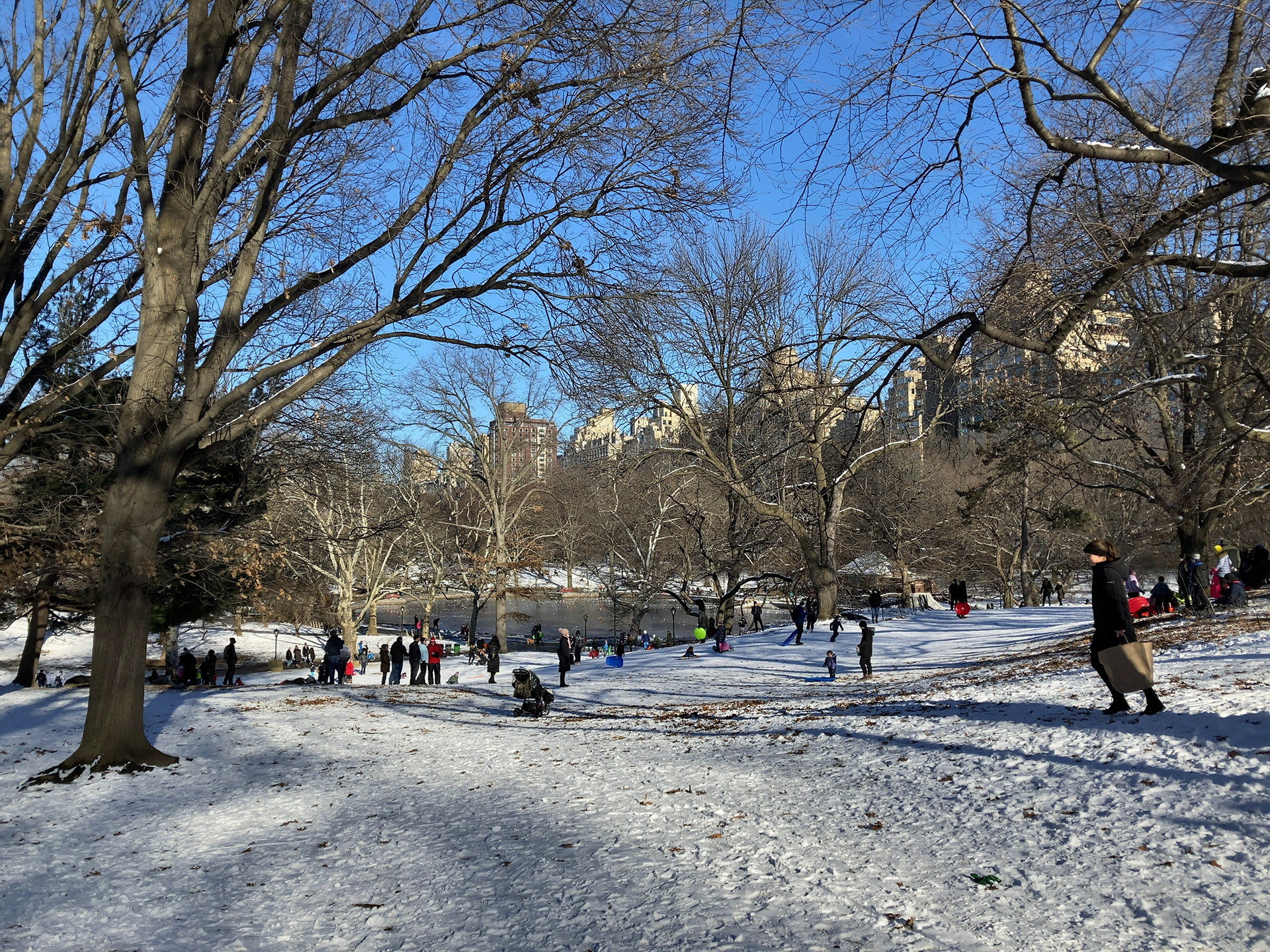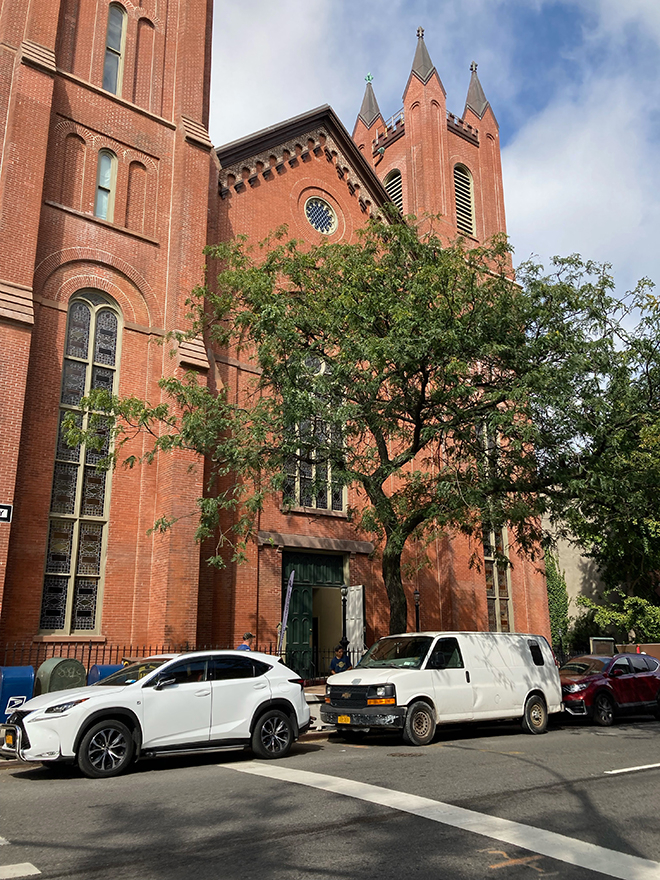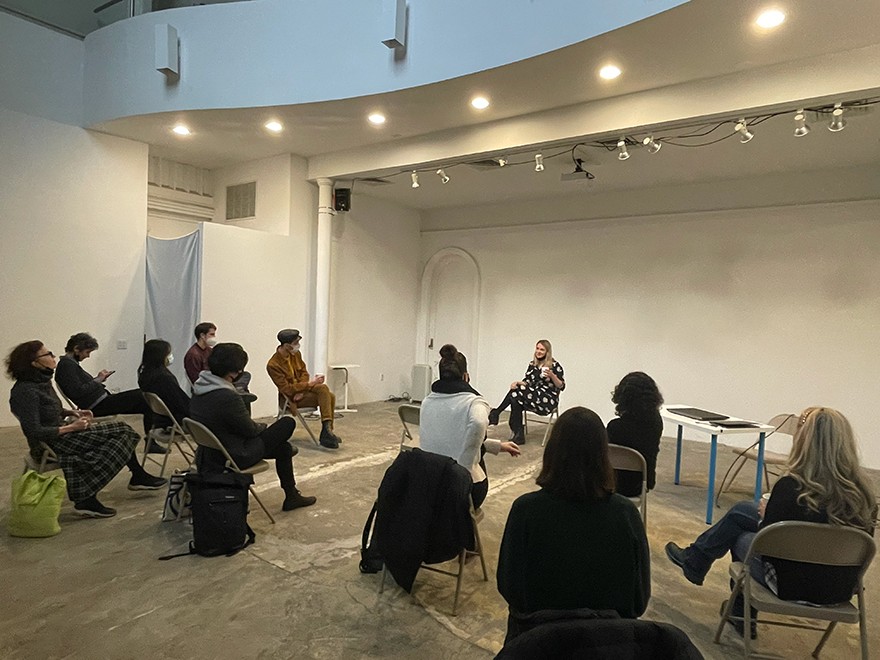This may be the Land of the Free, but there's plenty cause for righteous indignation
Technical notes for a stateside sojourn, plus a little extra (2)
By Kanai Manabu

Hosts
Next, on to the question of the “host.” As mentioned earlier, when applying for study programs run by the Agency for Cultural Affairs, or Japanese foundations, you need to have a “host.” Though it doesn’t apply to me, certainly in the case of this Agency for Cultural Affairs program, most of the artists accepted in the fine arts category are in reality “mid-career artists” in their thirties or forties who already have considerable experience in Japan and overseas, and are self-directed in their respective activities, so to be honest I don’t really know why they all need to seek a “host,” however the program was originally designed for the purpose of “study” in the form of “upcoming artists” receiving tuition overseas, so it’s probably no use complaining about that: the reality is, in any case, that without a “host” you will not get very far. [*3]
Having spoken to a number of people about the matter of hosts, it would appear, from what I understand, that in a lot of cases the host is an individual (artist, university professor etc) living in the intended destination, an organization (research institute, educational institution, foundation or other body), or a residency. When it comes to actually looking for a host, by all means start by thinking about the kind of activity you want to pursue, but if you already have a personal connection to someone possibly willing to act as your mentor, then it might be a good idea to ask them. Or if there is an organization that seems likely to understand and support your activities, another option is to just take the plunge and contact them asking about the possibility of being your host. Certainly in the United States there are arts-related organizations of various sizes, from bodies such as artist’s trusts and foundations to art museums, archive and research centers, that are widely accessible to artists and researchers, so if you explain your work and situation and make a courteous request for them to host your studies and provide support, most will at least reply. Occasionally someone will basically just ignore your request: that can’t be helped, so it pays not to let it get you down. In my experience though, if you really take care to explain the significance of what you want to do and are thinking, and the support you would like, you’ll receive more replies than you’d imagine. In terms of schedules for grant and fellowship applications, often the host has to be decided at the application stage (although an official letter can usually be submitted later), so you have to calculate back from that and be sure to get on to it in plenty of time. Artist-in-residence and similar open-call programs run on a year-to-year schedule, so you need to submit your application to coincide with their particular cycle, meaning in some cases preparing a long way ahead. For example, I first approached my host three years ago in 2018.
Now as I mentioned at the start, in my case I chose to take part in the AiR program run by Residency Unlimited in New York. My main reason for choosing an AiR program is because I anticipated it would offer an experience beyond my own planned activities, which is connected to what I said earlier about things peripheral to your own area of interest becoming quite important in a slightly longer stay. Fortunately for me, I had already undertaken some art activity outside of Japan, so was reasonably confident that when it came to the central purpose of this residency at least, I was capable of getting on with the research and production myself. But on the other hand, I felt there was a risk of missing things on the margins of my area of interest, so was hoping that an AiR would serve as a place to delve deeper than anticipated into my research, or serendipitously come across opportunities to expand the vision for my activities (and three months in, my sense is that this expectation was accurate). An AiR environment offering the opportunity to discuss things and swap news and information not only with New York-based artists but artists from other countries who come to this town with their own projects, interests, expectations and ambitions, was in that sense very appealing.

Residency Unlimited. Photo by Kanai Manabu
Obviously there are many options for AiR programs in New York, and where you work and with what kind of people are pretty important, all of which may make it hard to find a program that suits you. I will say though that in my case, I was actually fairly sure of what I wanted, probably because I had started to think about taking part in an RU residency from before I applied for this Agency for Cultural Affairs program. This certainty I attribute to the director of RU, Nathalie Anglès. Though it might be hard to believe these days, I was greatly influenced in the development of my art practice by Tanaka Koki, and in particular, was stunned on first encountering his works in around 2005, while studying art at graduate school (subsequently going on, incidentally, to follow his exhibitions, talks and podcasts in Japan, and in 2013 even going to Venice). It goes without saying that I found his works appealing in their own right, but what interested me most were the logic of the background ideas on which he hung these creative acts, and the kind of environment in which these had developed, and aided by the fact that around this time more artists were starting to construct their own websites, I searched for clues to understanding Tanaka by not only looking for information on his works and activities, but methodically examining everything from his career and CV to his links with related artists, residencies, arts bodies, and art-related individuals, mapping and writing up my own version of how the networks that intrigued me most had expanded. In the midst of this, I learned that Plastic bags into the sky, a work I was obsessed with because it seemed to me to represent a new phase in Tanaka Koki’s practice, had been made in New York in 2004. During this period, as an ACC grantee in New York, he appeared to have been on the program at Location One, where Nathalie was then director of the international residency program. Location One unfortunately did not last, but I thought that if I ever went to New York, I’d like to work at a place that facilitated that kind of transformation. A while later I learned that Nathalie had launched Residency Unlimited in Brooklyn. So in my case, I had been wanting to work with Nathalie in one form or another for about fifteen years, and though I thought about how much time of my year should be spent on an AiR program, and whether I should also check out other hosts to fit the nature of my work, the one thing I knew was that I would apply to Residency Unlimited. Looking back it strikes me this was a rather unbalanced way of seeking out information, but perhaps occasionally it is not a bad thing to start contemplating one’s own destination by imagining an environment experienced by an artist you’re deeply interested in, or their relationships with people there.
As we’re here, let me touch on the RU program. At this stage my impression is that the main distinguishing feature of RU is its small scale, in a good sense, meaning you know everyone you work with. Unlike the many bigger, better-known AiR facilities in New York, RU has no fixed spaces of its own apart from a multipurpose space in a church in the neighborhood of Carroll Gardens, and puts together programs according to the needs of the artist (eg if you need a studio to work in, they will help you find one). RU refers to this approach as “tailored.” Note this is not some euphemism to disguise a lack of glitzy studio facilities, but rather indicates their eagerness right from the application stage to share as much, and to the deepest level possible, what kind of artist I am, what I’m interested in, what I want to do, and what kind of support I require to do it. How my work is progressing, what I need, what gratifying advances I have made; they also take all this on board, and give support and advice as required, and most noteworthy of all, connect me with perfect timing to information and people that are just slightly off my research radar (which, more often than not, leads to new, unexpected developments). This unique atmosphere, a mixture of the familiar and stimulating, is not easy to find. The personality of the director Nathalie, and her tremendous vitality (we RU resident artists often wonder when she actually sleeps…) strikes me as a major factor in this, and injects an incredible positivity into the organization.

For the welcome gathering: New residents introduce their practice at the monthly welcome gathering at RU. Photo by LuLu Meng
Miscellaneous
Once you know what you want to do and where you want to go, have a host, know how you are going to proceed if it all goes ahead, and have made the necessary financial calculations, then it is a case of sending your application to the Agency for Cultural Affairs or your foundation of choice, and waiting. If the application is accepted, it’s time for celebration but … if you are actually successful, you’ll suddenly find yourself scurrying about doing lots of things to then make it happen. From this point matters will depend on where you are going and your individual situation, so I’ll just offer a list of practical tips for getting ready to go as it was in my case, to the United States.
- Organize your visa as described above. Key here are to gather the required documents, and allow plenty of time for the application.
- When it came to belongings and moving overseas, I’m fortunate to have family remaining in Tokyo, so got away with sending only the necessary items. In addition to my baggage allowance on the plane, I needed various documents and books, and initially planned to send these by the most economical means, but failed to do my homework properly and discovered too late that actually due to the pandemic, that service was no longer available. So I ended up making urgent use of Nittsu’s international parcel delivery service (air), to the tune of about 90,000 yen for two boxes totaling 50 kilograms.
- For money you can often manage with a credit or debit card, but there are scenarios where you’ll need cash, and in the US, more situations than you’d imagine where people use checks or money orders, such as paying rent and utility charges etc, so it’s best to assume you’ll need to open an American bank account. However doing so as a rule requires a social security number (SSN), not available to foreigners on temporary visas like B visas. The only option is probably to open an account with the Union Bank through the Mitsubishi UFJ Bank service (MUFG Union Bank, NA). You can arrange this online and by post, but it takes a while, so start the process early.
- For sending funds from Japan and everyday card payments I use Wise (formerly TransferWise). The transfer fees are low, the process for sending cash is fast, and you can manage multiple currencies in a single account, which makes it also very handy if you are traveling to different countries, such as when on a residency program. Lately I’ve met a growing number of artists using it on residencies.
- For accommodation, I just rented an apartment through a real estate agent. The process from looking for a place to signing the contract was quite a slog, but it was pretty much sorted in a couple of weeks. I proceeded with caution, remembering to do all the right things like research local real estate info in advance (on the likes of StreetEazy or Triplemint) to get an idea of potential locations and prices, and to actually check out the neighborhood and property, and talk to the broker or landlord and make sure everything about the contract was clear, but in fact it turned out to be easier to find a place than I thought. My biggest problem was supplying proof of income when I signed the rental contract, and although a letter from the Agency for Cultural Affairs, or proof of savings, is handy to an extent, foreigners unable to pass the credit history checks you face in the US during the screening process for moving in somewhere have no choice but to resort to cash. In my case this meant paying six months’ rent up front. Although I’ve heard that this kind of prepay contract is actually illegal these days, I suspect slightly dodgy contractual arrangements of this kind are fairly widespread. In any case, living as a foreigner with no friends or family nearby, there are times when ultimately, money talks.
- Listings Project(LP)can also be a useful reference when searching for accommodation or a studio. LPis a kind of artists’ bulletin board, and has information on available studios, housing with studios, and sublets available through local artists currently overseas on residencies. Such properties are hard to access unless the conditions and timing are perfect, but the site is also a useful way to understand the communities in which artists around your age work and live.
- Needless to say, a mobile phone is a must-have. If you have an unlocked phone you can sign up easily for cheap plans with various MVNOs (mine is about $15/month). SIM cards are available at neighborhood drug stores and supermarkets, at the airport and so on for a dollar or so, and all you need to do is buy one for an operator with a monthly plan that you like, put it in the phone, follow the instructions to activate it, and you’re good to go.
I’ll leave the practical information here for the moment. Next time, I hope to explain how to conduct specific research and archival searches in America.
Technical notes for a stateside sojourn, plus a little extra (1)Technical notes for a stateside sojourn, plus a little extra (3)
Technical notes for a stateside sojourn, plus a little extra (4) part 1
Technical notes for a stateside sojourn, plus a little extra (4) part 2
Kanai Manabu
Artist. Born in Tokyo in 1983. After his graduation from Jiyu Gakuen College, he received his Master’s degree from Institute of Advanced Media Arts and Sciences (IAMAS) and his PhD from Tokyo University of the Arts. He is Currently working in New York with the support of the Agency for cultural Affairs’ Program of Overseas Study for Upcoming Artists.